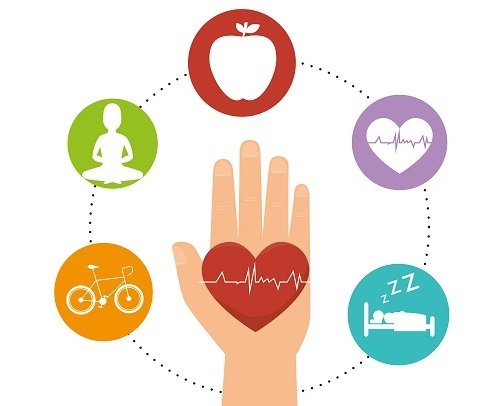Combating Occupational Burnout: Strategies for Achieving Work-Life Equilibrium and Revitalization
Occupational burnout, characterized by emotional exhaustion, depersonalization, and reduced personal accomplishment (Maslach Burnout Inventory), is a prevalent concern impacting employee well-being and organizational productivity. This article explores evidence-based strategies for mitigating burnout, fostering work-life balance, and promoting employee renewal. We will examine the application of relevant psychological models and principles within real-world contexts to effectively address this challenge.
1. Early Identification and Assessment: Recognizing the initial signs of burnout is crucial. Symptoms such as persistent fatigue, cynicism, reduced professional efficacy, and increased irritability should prompt self-assessment using validated tools like the Maslach Burnout Inventory (MBI). Early intervention is key to preventing escalation and long-term consequences. Applying the Job Demands-Resources (JD-R) model, we can analyze the balance between job demands (e.g., workload, time pressure) and job resources (e.g., autonomy, social support). A high demand-low resource ratio increases burnout risk. Understanding this imbalance helps identify specific areas needing intervention.
2. Establishing Healthy Boundaries and Prioritization: The establishment of clear boundaries between work and personal life is paramount. This involves utilizing time management techniques such as the Eisenhower Matrix (urgent/important) to prioritize tasks effectively. By adhering to scheduled breaks and strictly limiting work-related activities during personal time, employees can safeguard their well-being and prevent encroachment on personal life. This aligns with the conservation of resources theory, which suggests that individuals strive to acquire and protect resources vital to their well-being. Setting boundaries helps protect these resources.
3. Effective Task Management and Delegation: Implementing effective time management strategies, such as the Pomodoro Technique (focused work intervals with short breaks), can improve focus and efficiency. When faced with an overwhelming workload, strategic delegation of tasks is essential. This not only reduces individual burden but also fosters teamwork and skill development within the team. The application of this strategy demonstrates an understanding of organizational behavior principles related to workload distribution and team dynamics.
4. Prioritizing Physical and Mental Well-being: Maintaining physical health is intricately linked to mental well-being. Regular physical activity, a balanced diet, and adequate sleep are critical components of burnout prevention. Applying the self-determination theory (SDT), we understand that supporting intrinsic motivation through opportunities for autonomy, competence, and relatedness is crucial for employee well-being. Regular exercise and healthy lifestyle choices enhance these aspects.
5. Cultivating Social Support and Seeking Professional Guidance: Strong social support networks play a vital role in buffering against stress and promoting resilience. Encouraging open communication within the workplace and utilizing employee assistance programs (EAPs) are crucial. When burnout persists despite self-help strategies, seeking professional help from therapists or counselors is a critical step. This highlights the importance of recognizing the limitations of self-management and accessing professional expertise.
6. Engaging in Restorative Activities and Mindfulness Practices: Engaging in leisure activities, hobbies, and mindfulness practices (e.g., meditation, yoga) fosters psychological detachment from work and promotes relaxation. These activities replenish emotional resources, reducing stress and improving overall well-being. This aligns with the stress-buffering hypothesis, which suggests that social support and positive coping mechanisms moderate the relationship between stress and its negative consequences.
7. Promoting a Supportive Work Environment: Cultivating a positive and supportive work environment is the responsibility of both employers and employees. This involves fostering open communication, promoting teamwork, recognizing achievements, and providing adequate resources and training. Organizational commitment and employee engagement are directly influenced by the quality of the work environment. A supportive culture promotes job satisfaction and reduces burnout risk.
8. Learning to Set Boundaries and Prioritize Self-Care: The ability to say "no" to additional tasks or responsibilities when feeling overwhelmed is crucial. Prioritizing self-care is not a sign of weakness but rather a demonstration of self-awareness and professional responsibility. This concept builds upon the self-care model in which individuals are encouraged to take proactive steps to safeguard physical, mental, and emotional well-being.
9. Regular Self-Reflection and Adjustment: Regularly evaluating work-life balance and making necessary adjustments is critical. Periodic self-reflection allows individuals to identify potential triggers, adapt strategies, and maintain equilibrium. This continuous monitoring and adjustment are essential components of maintaining long-term well-being.
Conclusions and Recommendations
Occupational burnout is a complex issue stemming from the interaction between individual characteristics, job demands, and organizational factors. This article has presented a multi-faceted approach, integrating various theoretical models and practical strategies to address this critical concern. The application of concepts from the JD-R model, SDT, Conservation of Resources theory, and the stress-buffering hypothesis provides a comprehensive framework for understanding and mitigating burnout. Recommendations include proactive individual strategies (time management, boundary setting, self-care), organizational interventions (supportive work environments, workload management, training), and the provision of accessible professional support services. Further research should focus on the longitudinal impact of these strategies across diverse occupational settings, exploring the effectiveness of tailored interventions based on individual differences and organizational contexts. The long-term impact of workplace burnout extends beyond individual employees, affecting productivity, retention, and overall organizational success. Therefore, a multifaceted approach encompassing both individual and organizational strategies is crucial for effectively managing and preventing this pervasive challenge.





No comments yet. Be the first to share your thoughts!